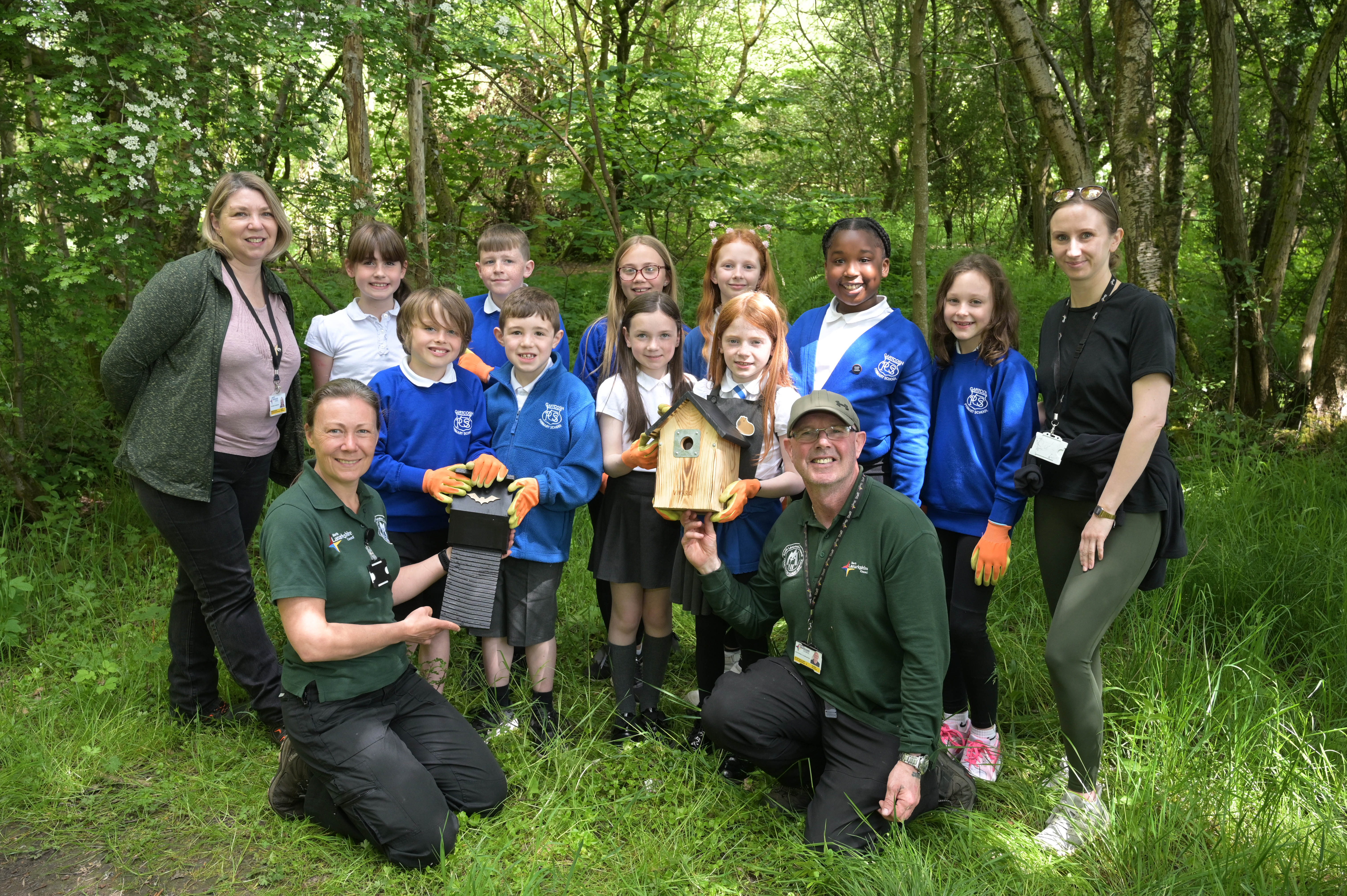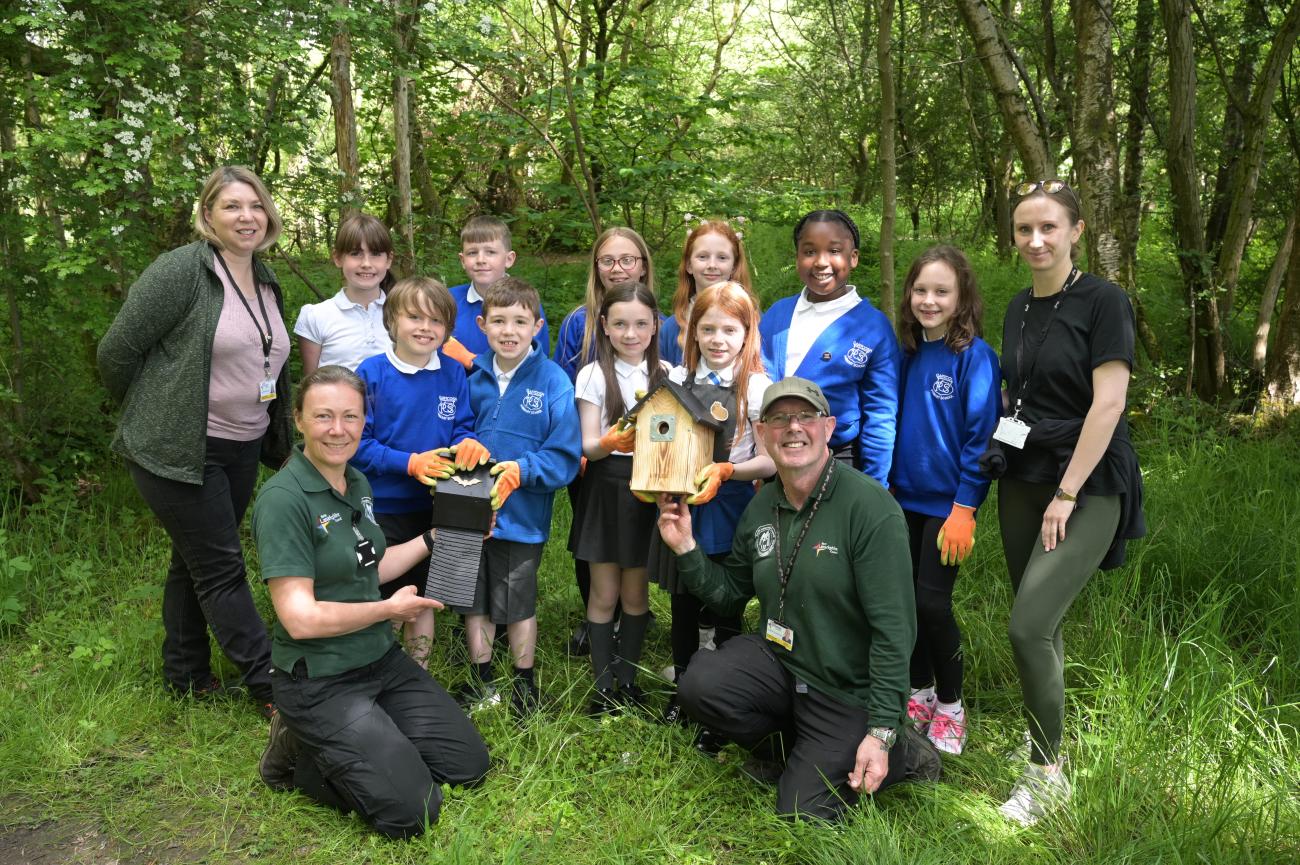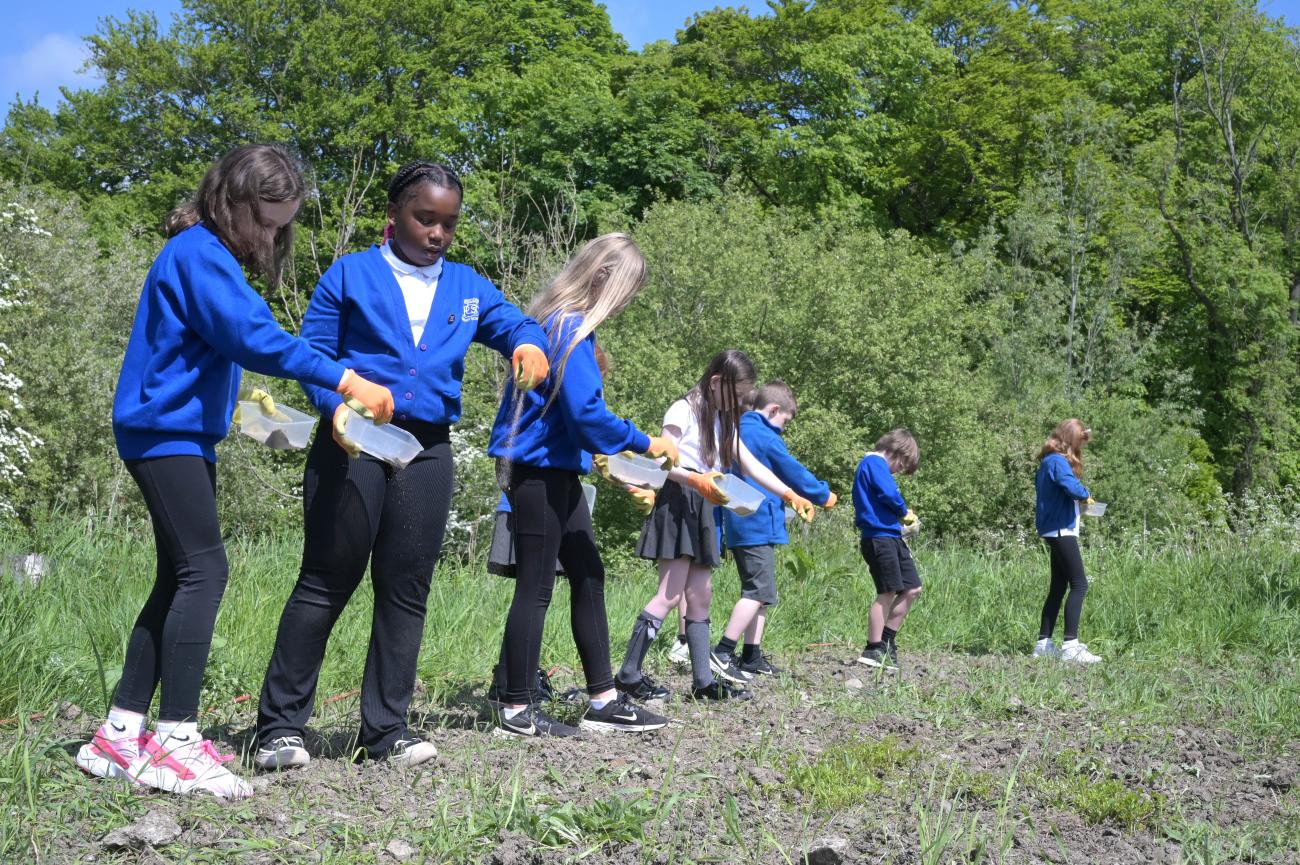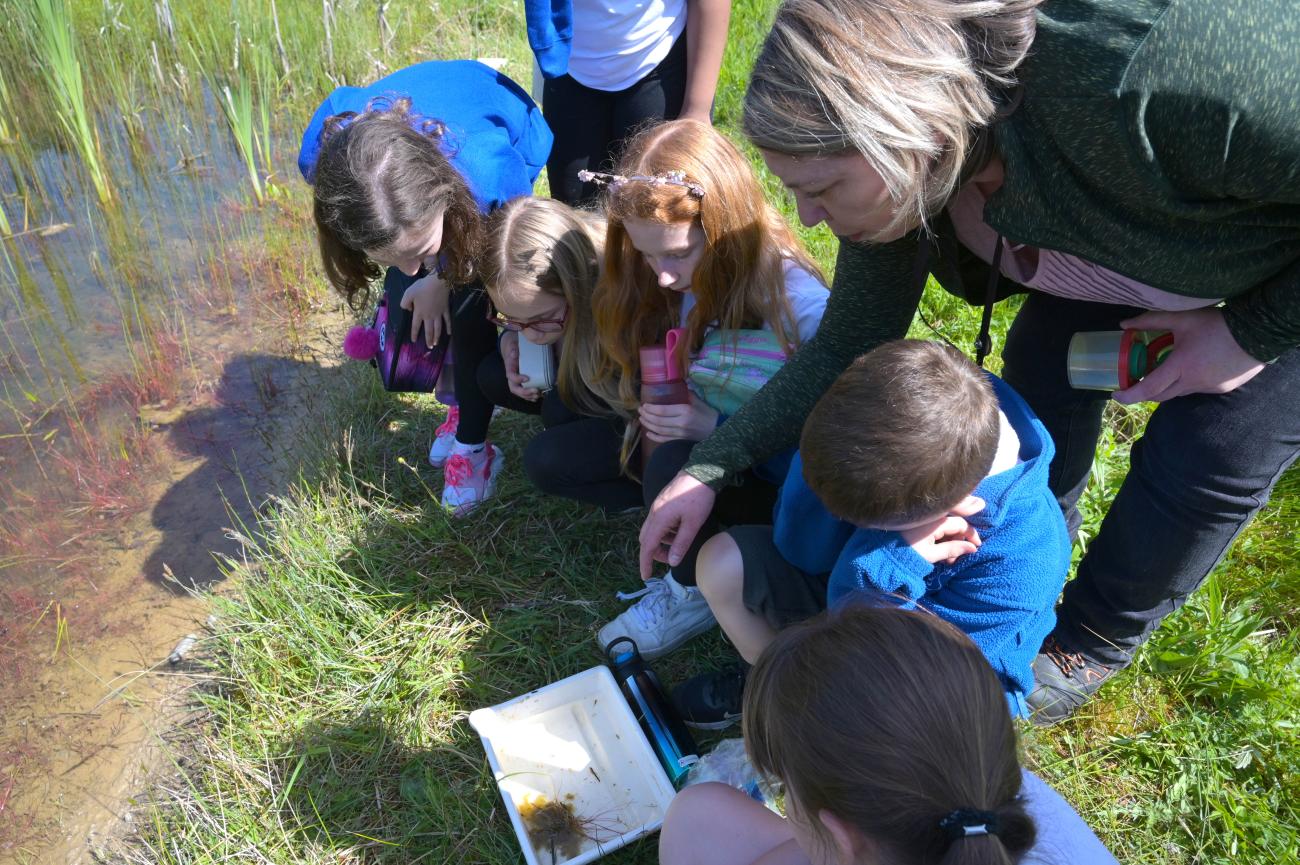Local school pupils visited Gartcosh Local Nature Reserve to help our countryside rangers increase the wildflower habitat.
P4 to P7 pupils from the school’s Eco group planted a variety of wildflowers including Corn Cockle, Ox-eye Daisy, Yellow Rattle and Ragged Robin to help increase the wildflower coverage and create an additional habitat for bees and butterflies.
A walk through the reserve to the ponds provided an amazing opportunity for the pupils to see dragonflies and damselflies flying right in front of them.
In the coming months, the old and damaged bird and bat boxes will be replaced with new boxes.
The school visit was organised as part of a Participatory Budgeting project by our Community Greenspace Team.
Last year, residents were invited to suggest projects that would improve, enhance, restore or increase wildlife habitats and greenspaces to help local environments become more resilient to climate change, as well as creating more sustainable areas for local people to enjoy.
The Gartcosh project is one of five winning ideas voted by the public.
“The children had a wonderful time learning about the wildlife and biodiversity within the nature reserve, and came back with lots to tell us all about their experience,” said Head teacher Alison McFarlane.
“Wildflowers provide a beautiful display during summer when they’re in full bloom, but they have an important role for local biodiversity in autumn and winter when the seeds provide food for birds and insects,” said Vicky Abernethy, Greenspace and Country Parks Manager.
"They also provide nectar for bees and butterflies, the leaves are tasty food for caterpillars, the foliage is an ideal habitat for insects and, importantly, they absorb carbon dioxide so help reduce our carbon footprint.”
Participatory Budgeting was introduced under the Community Empowerment (Scotland) Act to encourage more community participation and to direct resources to communities where it is most needed, allowing communities to have a say in how public money is spent.
The Community Greenspace Participatory Budgeting project was funded by NatureScot’s Nature Recovery.




